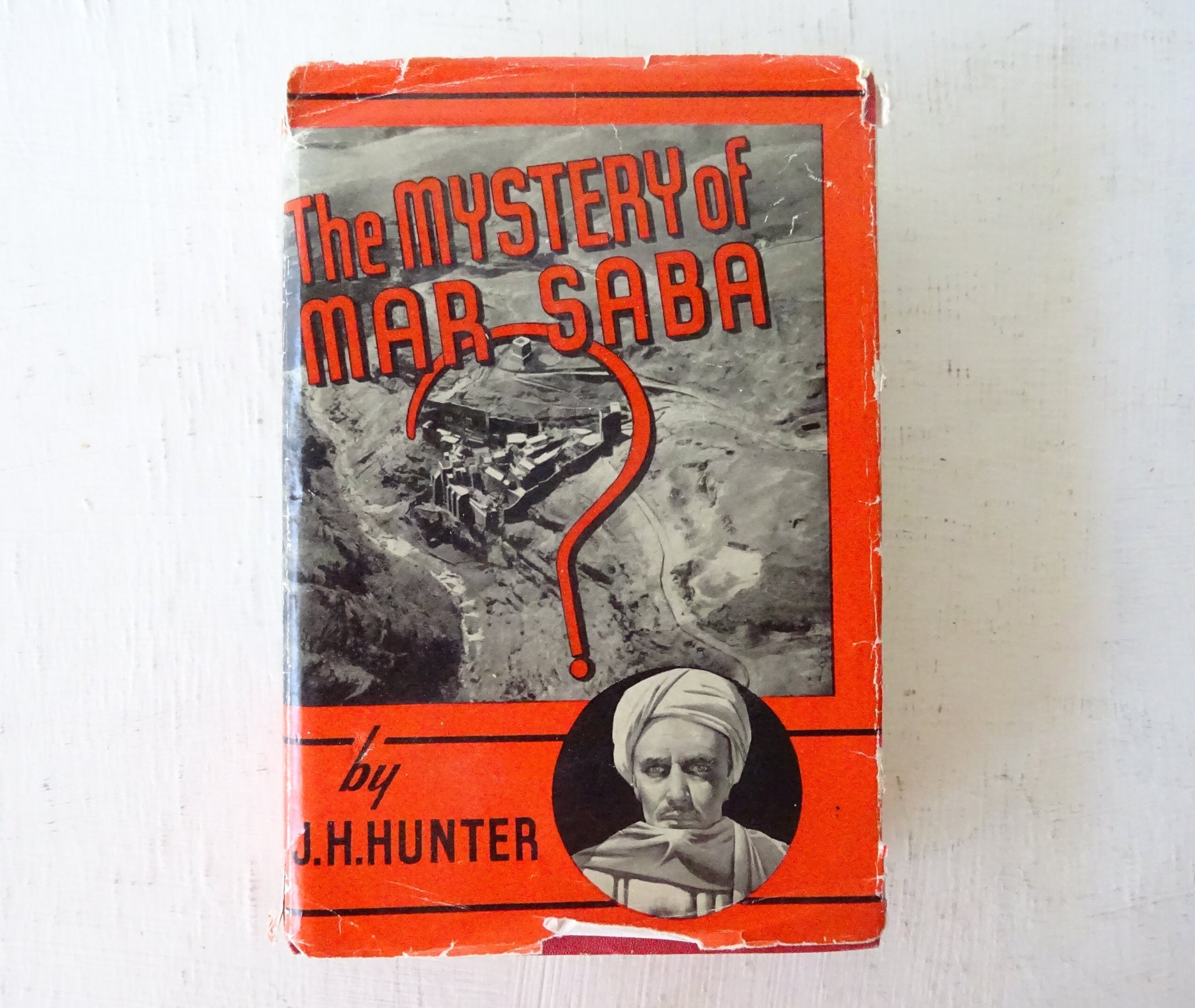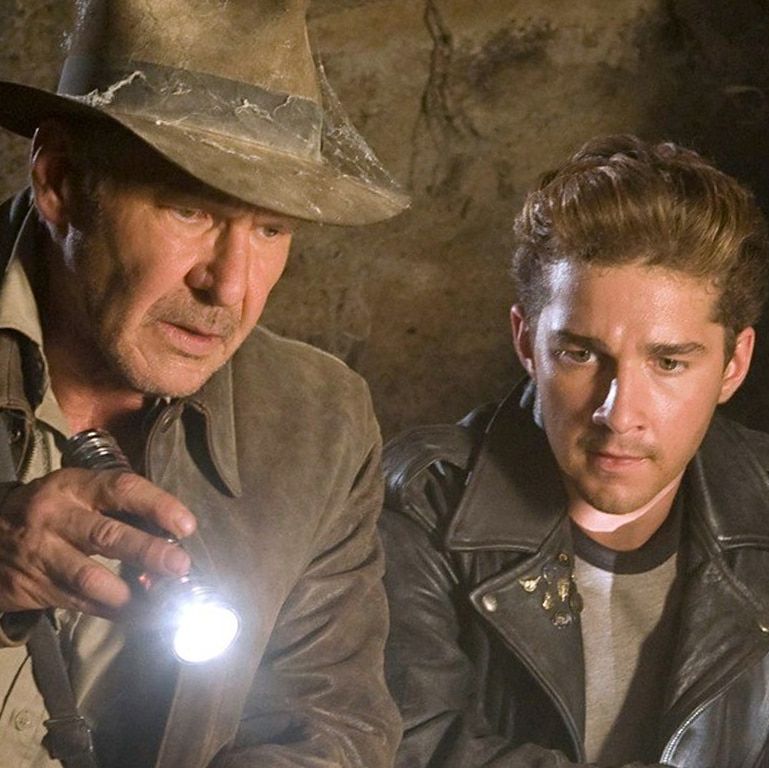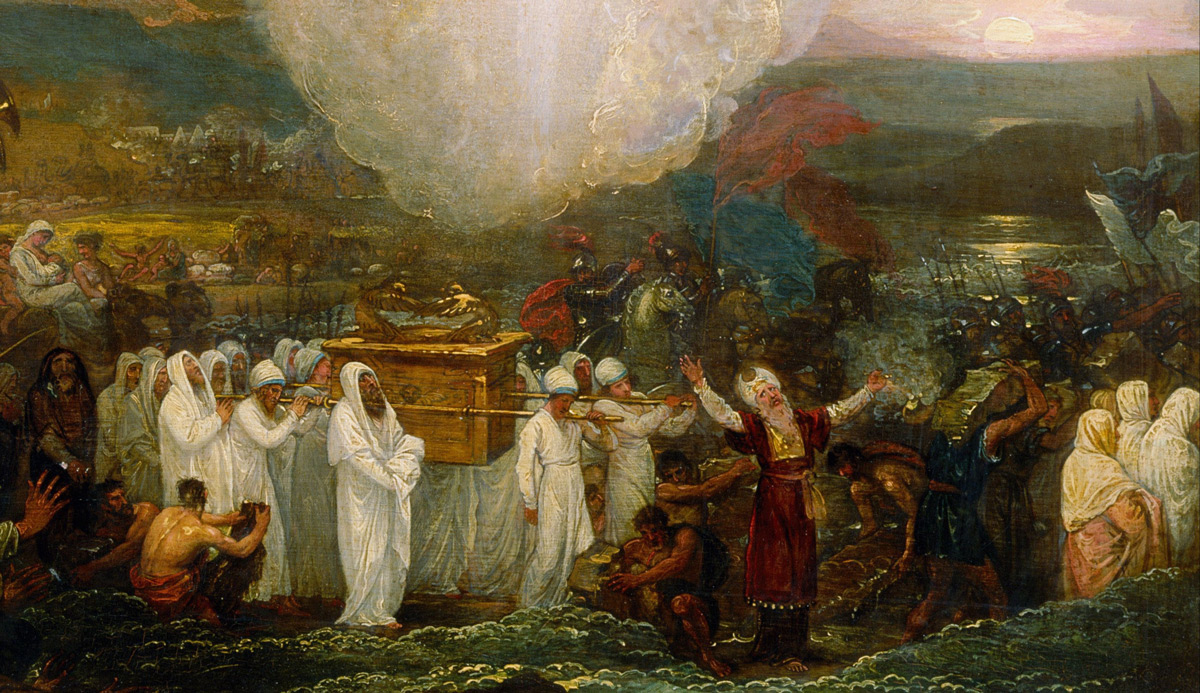.
.
Negative review, fwiw:
https://www.jpost.com/israel-news/cultu ... cle-743779
Edit: **Spolier Alert** Variety article, 6/30/23
Now let's get entirely loopy, meta ...
Entirely fictitious, in 1936 Dr. Henry Walton "Indiana" Jones, Jr. is an archaeology professor at Marshall College (I initially assumed this was Columbia, in Manhattan; no, LucasFilms has him at Princeton in the 1930s); the "Dial of Doom" is set in 1944 thus the franchise covers the entire WW2 period. "Dr. Jones" studied under famed Egyptologist and archaeologist Abner Ravenwood at the Oriental Institute at the University of Chicago -- a thinly-veiled cover for James Henry Breasted.
Who else would be a real, period American professor, upon whom any aspect of "Indiana Jones" might be modelled? I thought in passing of that scholarly renegade, Dr. Morton Smith, trapped in Jerusalem (1941-5) by the War. Although the time-frame is 20 years later, and most colleges could bear some similarities, is this fiction entirely coincidental?
Princeton University ~ Brown University
"Marshall College" ~ Drew University
In fact, the original protagonist of Raiders was also named "Smith". Oops, too close: "Change that!" The history of the story-line's inception is abit murky, whether Lucas/Spielberg concepts were derived from serials or pulps. Dubious? They certainly understood copyright laws, in any case. Co-author Philip Kaufman is credited with the original idea: tellingly, he was born in Chicago in 1936, dates this idea to a purported orthodontist's story (c.1942, Age 5) and attended the University of Chicago (where he received a degree in history). By Kaufman's own account, he had hoped to become a professor of history -- I have no idea if he ever studied under Leo Strauss. Then he became a hippie ... and moved to the West Coast.
According to George Lucas, improbably describing what he recalled from c.1950-5:
they started talking about Lucas’ old idea for an action-adventure movie that would echo the Republic serials from the 1930s and 1940s. ... Lucas’ pitch about an archaeology professor travelling around the Globe in pursuit of a rare artifact ... the Republic serials—made in the 1930s and 1940s—which he watched when he was a kid. Serials like Spy Smasher {Feb. 1940; Lucas was born in May 1944}, Zorro’s Fighting Legion {1939 film} and Don Winslow of the Navy {1935 comic strip; c.1941}, a cliffhanger about a two-fisted serviceman who fought the Nazis. “Why don’t they make this kind of movies anymore?” he wondered and imagined a movie about an archaeologist in a leather jacket, felt fedora and a three-day beard who carries a bullwhip and run around the globe seeking ancient relics and lost civilizations.
As a slight period digression:
Elsewhere, we've seen George Lucas credit Joseph Campbell, a later acolyte of Ludwig Edelstein's roommate at Heidelberg (1925-1930), German Indologist Heinrich Zimmer. Edelstein was also close friends with Leo Strauss (later, professor at the University of Chicago), a connection to meeting Gershom Scholem in New York in March, 1938 if not in Berlin c.1930. Morton Smith, of course, is considered Scholem's acolyte from 1941 on; Scholem was also close to Hans Jonas and Hans Levy (Edelsteins' fellow students in the late 1920s), colleagues of Smith in Jerusalem. All of these Classical scholars of Antiquity are closely connected, and furthermore funded by the Rockefellers (coincidentally), financial backers of James Henry Breasted (of course.) My interest in these scholars, circa 1925-1938, is what brings me here.
So the earliest known story-line for the screenplay/film (which became Raiders of the Lost Ark) dates to 1977 or '78, just after Morton Smith's fantastical Jesus the Magician was first published and three years after his notoriety was established. See this October 26, 1978 review:
In a review of Morton Smith's recent book, Jesus the Magician (1978), Frank Kermode offers the following observation on the fascination with secrets and the desire to see them revealed:
Most of us have a passion for secret history, for the real dirt concealed by the official version. There is a gross justification for our interest, for experience shows that official versions invariably have a lot to hide; and there is a subtler one, which is that the most truth-seeking of narrative has invariably have a lot to hide ; and there is a subtler one , which is that the most truth — seeking of narrative has to achieve consonances and illusions of simple causality which are incompatible with a desire to tell all. Of course, the story we want — absolutely candid, free of the guilt and bias of the official version — is itself subject to similar distortions and omissions, and just as incapable of bridging the gap between the written text and something that is supposed to have actually happened. But we want it all the same (“So that’s how it really was! Now that makes more sense”) and believe it because it was suppressed, and is therefore more fun to believe; or because, since it reveals error and duplicity in something else, it seems to be ex officio on the side of truth.
Most of us have a passion for secret history, for the real dirt concealed by the official version. There is a gross justification for our interest, for experience shows that official versions invariably have a lot to hide; and there is a subtler one, which is that the most truth-seeking of narrative has invariably have a lot to hide ; and there is a subtler one , which is that the most truth — seeking of narrative has to achieve consonances and illusions of simple causality which are incompatible with a desire to tell all. Of course, the story we want — absolutely candid, free of the guilt and bias of the official version — is itself subject to similar distortions and omissions, and just as incapable of bridging the gap between the written text and something that is supposed to have actually happened. But we want it all the same (“So that’s how it really was! Now that makes more sense”) and believe it because it was suppressed, and is therefore more fun to believe; or because, since it reveals error and duplicity in something else, it seems to be ex officio on the side of truth.
Life imitates fiction? Here's where it gets complicated, a Möbius strip (see Link).
1.2 The Alternative Narrative: The Manuscript of Clement’s Letter to Theodore as a Fake
According to this alternative narrative, Smith read James Hogg Hunter’s novel The Mystery of Mar Saba at some point between its publication in 1940 and his own journey to the monastery of Mar Saba in the summer of 1958. Hunter’s novel depicts, within a larger plotline of spy intrigue, a forgery of an early Christian text (Shred of Nicodemus) planted in Mar Saba by Nazis for the British archaeologist, Sir William Bracebridge, to find.63 Smith thus became inspired by this novel to create a literary forgery of his own,64 though he would also draw inspiration from a number of other literary works, as explicated below. Two notable facts should be included here.65 First, Hunter’s novel contained an illustration of the forged Shred of Nicodemus.66 Second, Smith’s given name, Morton, was similar to the name of one of the minor characters in Hunter’s novel, that of Lord Moreton.67
63 James H. Hunter, The Mystery of Mar Saba (New York: Evangelical Publishers, 1940).
64 Philip Jenkins, Hidden Gospels: How the Search for Jesus Lost Its Way (Oxford: Oxford University Press, 2001) 101–102; Carlson, Gospel Hoax, 19; Francis Watson, “Beyond Suspicion: On the Authorship of the Mar Saba Letter and the Secret Gospel of Mark,” Journal of Theological Studies 61 (2010) 128–170, at 163; Evans, “Grounds for Doubt,” 81.
65 The two facts listed here are intentionally obscure, the strangeness of which derives from their status as non sequuntur, as discussed in subsection 2.5.2.
66 Carlson, Gospel Hoax, 19; Watson, “Beyond Suspicion,” 167.
67 Evans, “Grounds for Doubt,” 81. Anthony Le Donne refines this point by pointing out their indistinguishable phonetic character; Anthony Le Donne, The Wife of Jesus: Ancient Texts and Modern Scandals (London: Oneworld Publications, 2013) 88.
According to this alternative narrative, Smith read James Hogg Hunter’s novel The Mystery of Mar Saba at some point between its publication in 1940 and his own journey to the monastery of Mar Saba in the summer of 1958. Hunter’s novel depicts, within a larger plotline of spy intrigue, a forgery of an early Christian text (Shred of Nicodemus) planted in Mar Saba by Nazis for the British archaeologist, Sir William Bracebridge, to find.63 Smith thus became inspired by this novel to create a literary forgery of his own,64 though he would also draw inspiration from a number of other literary works, as explicated below. Two notable facts should be included here.65 First, Hunter’s novel contained an illustration of the forged Shred of Nicodemus.66 Second, Smith’s given name, Morton, was similar to the name of one of the minor characters in Hunter’s novel, that of Lord Moreton.67
63 James H. Hunter, The Mystery of Mar Saba (New York: Evangelical Publishers, 1940).
64 Philip Jenkins, Hidden Gospels: How the Search for Jesus Lost Its Way (Oxford: Oxford University Press, 2001) 101–102; Carlson, Gospel Hoax, 19; Francis Watson, “Beyond Suspicion: On the Authorship of the Mar Saba Letter and the Secret Gospel of Mark,” Journal of Theological Studies 61 (2010) 128–170, at 163; Evans, “Grounds for Doubt,” 81.
65 The two facts listed here are intentionally obscure, the strangeness of which derives from their status as non sequuntur, as discussed in subsection 2.5.2.
66 Carlson, Gospel Hoax, 19; Watson, “Beyond Suspicion,” 167.
67 Evans, “Grounds for Doubt,” 81. Anthony Le Donne refines this point by pointing out their indistinguishable phonetic character; Anthony Le Donne, The Wife of Jesus: Ancient Texts and Modern Scandals (London: Oneworld Publications, 2013) 88.
Indeed. This is not merely 'superficial resemblance': this exact pulp thriller (© Nov. 26, 1940, until 1990?) introduced identical themes which were later -- dare I say it -- copied (or lightly adapted, 'Judaized') by the c.1977 writer(s) of Indiana Jones: Raiders of the Lost Ark. Link:
In 1940, Scottish-Canadian journalist James Hogg Hunter published his first novel, The Mystery of Mar Saba, a war-time adventure set in 1930s Palestine.1 Featuring sinister Nazis, duplicitous Arab natives, a chiseled U.S. hero, and a biblical find that could “change the course of history,” this explicitly Christian novel was the prototype of a genre of novels that began proliferating during the Cold War Era and continue to this day. I call this genre “gospel thrillers,” as they depict conspiracy and danger attendant upon the discovery of a new first-century gospel.

Do we think the story-line's author/ghostwriter, mining pop culture for a dramatic quasi-Biblical archaeological theme, perused the Morton Smith books in the mid-1970s? Or JH Hunter's Mar Saba thriller? The 'Indiana Jones' franchise has grossed more than $1.4 billion (not adjusting for inflation), it's not a trivial derivative in monetary terms. And so I thought it's interesting to show how this latest installment harkens back to a favorite topic of this forum.
Has anyone ever connected these dots, before?

